[1] Molitorisova, M., Sutovska, M., Kazimierova, I., Barborikova, J., Joskova, M., Novakova, E., & Franova, S. (2021). The anti-asthmatic potential of flavonol kaempferol in an experimental model of allergic airway inflammation. European journal of pharmacology, 891, 173698. [2] Liew, K. Y., Kamise, N. I., Ong, H. M., Aw Yong, P. Y., Islam, F., Tan, J. W., & Tham, C. L. (2022). Anti-Allergic Properties of Propolis: Evidence From Preclinical and Clinical Studies. Frontiers in pharmacology, 12, 785371. [3] Armutcu, F., Akyol, S., Ustunsoy, S., & Turan, F. F. (2015). Therapeutic potential of caffeic acid phenethyl ester and its anti-inflammatory and immunomodulatory effects (Review). Experimental and therapeutic medicine, 9(5), 1582–1588. [4] El-Sharkawy, H. M., Anees, M. M., & Van Dyke, T. E. (2016). Propolis Improves Periodontal Status and Glycemic Control in Patients With Type 2 Diabetes Mellitus and Chronic Periodontitis: A Randomized Clinical Trial. Journal of periodontology, 87(12), 1418–1426. [5] Przybyłek, I., & Karpiński, T. M. (2019). Antibacterial Properties of Propolis. Molecules (Basel, Switzerland), 24(11), 2047. [6] Anjum, S. I., Ullah, A., Khan, K. A., Attaullah, M., Khan, H., Ali, H., Bashir, M. A., Tahir, M., Ansari, M. J., Ghramh, H. A., Adgaba, N., & Dash, C. K. (2019). Composition and functional properties of propolis (bee glue): A review. Saudi journal of biological sciences, 26(7), 1695–1703. [7] Esposito, C., Garzarella, E. U., Bocchino, B., D'Avino, M., Caruso, G., Buonomo, A. R., Sacchi, R., Galeotti, F., Tenore, G. C., Zaccaria, V., & Daglia, M. (2021). A standardized polyphenol mixture extracted from poplar-type propolis for remission of symptoms of uncomplicated upper respiratory tract infection (URTI): A monocentric, randomized, double-blind, placebo-controlled clinical trial. Phytomedicine : international journal of phytotherapy and phytopharmacology, 80, 153368. |







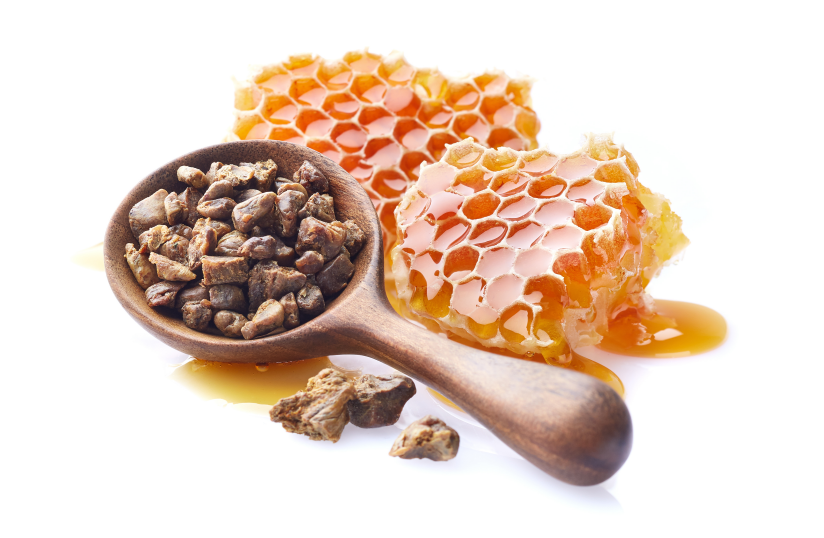
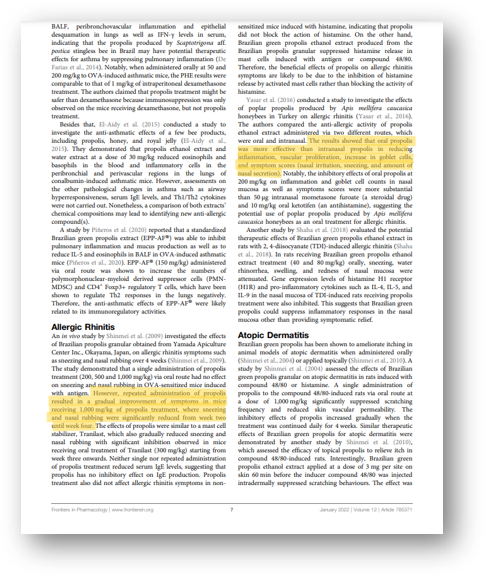
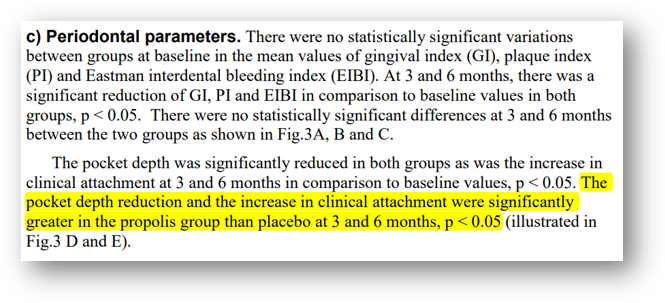
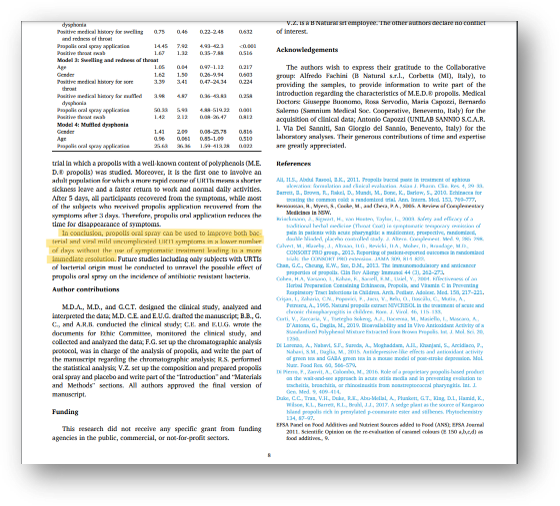








![[12월특가] 리포좀 글루타치온 9X 필름 3박스 (총 90매) [12월특가] 리포좀 글루타치온 9X 필름 3박스 (총 90매)](https://godomall.speedycdn.net/d38889e2d902ed3dcc124f1c31cbbf35/goods/1000002464/image/main/1000002464_main_019.jpg)
![[12월특가] 여에스더 유산균 클래식 4병 (총 8개월분) [12월특가] 여에스더 유산균 클래식 4병 (총 8개월분)](https://godomall.speedycdn.net/d38889e2d902ed3dcc124f1c31cbbf35/goods/1000002465/image/main/1000002465_main_031.jpg)
![[12월특가][2+2] 관절&연골건강 엠에스엠 MSM 4박스 (총 4개월분) [12월특가][2+2] 관절&연골건강 엠에스엠 MSM 4박스 (총 4개월분)](https://godomall.speedycdn.net/d38889e2d902ed3dcc124f1c31cbbf35/goods/1000002248/image/main/1000002248_main_087.jpg)
![[12월특가][2+2] 눈건강 루테인&아스타잔틴 4박스 (총 4개월분) [12월특가][2+2] 눈건강 루테인&아스타잔틴 4박스 (총 4개월분)](https://godomall.speedycdn.net/d38889e2d902ed3dcc124f1c31cbbf35/goods/1000002482/image/main/1000002482_main_053.jpg)
![[12월특가][2+2] 엘라스틴 디엔에이 7X 젤리 4박스 (총 56포) [12월특가][2+2] 엘라스틴 디엔에이 7X 젤리 4박스 (총 56포)](https://godomall.speedycdn.net/d38889e2d902ed3dcc124f1c31cbbf35/goods/1000002249/image/main/1000002249_main_083.jpg)
![[12월특가][2+2] 비타민C 3000 프리미엄 4박스 (총 120포) [12월특가][2+2] 비타민C 3000 프리미엄 4박스 (총 120포)](https://godomall.speedycdn.net/d38889e2d902ed3dcc124f1c31cbbf35/goods/1000002345/image/main/1000002345_main_058.jpg)
![[12월특가][2+2] 리포좀 멀티비타민&미네랄 4박스 (총 4개월분) [12월특가][2+2] 리포좀 멀티비타민&미네랄 4박스 (총 4개월분)](https://godomall.speedycdn.net/d38889e2d902ed3dcc124f1c31cbbf35/goods/1000002481/image/main/1000002481_main_083.jpg)
![[12월특가][2+2] 액티브 아르기닌 6000 4박스 (총 56포) [12월특가][2+2] 액티브 아르기닌 6000 4박스 (총 56포)](https://godomall.speedycdn.net/d38889e2d902ed3dcc124f1c31cbbf35/goods/1000002284/image/main/1000002284_main_093.jpg)
![[12월특가][2+2] 면역기능 증진 기능성 베타글루칸 4박스 (총 4개월분) [12월특가][2+2] 면역기능 증진 기능성 베타글루칸 4박스 (총 4개월분)](https://godomall.speedycdn.net/d38889e2d902ed3dcc124f1c31cbbf35/goods/1000002344/image/main/1000002344_main_052.jpg)
![[12월특가][2+2] 커큐민 다이렉트 필름 4박스 (총 120매) [12월특가][2+2] 커큐민 다이렉트 필름 4박스 (총 120매)](https://godomall.speedycdn.net/d38889e2d902ed3dcc124f1c31cbbf35/goods/1000002483/image/main/1000002483_main_085.jpg)
![[국민영양] 여에스더 초임계 알티지 오메가3 (흡수에 용이한 rTG 오메가3) [국민영양] 여에스더 초임계 알티지 오메가3 (흡수에 용이한 rTG 오메가3)](https://godomall.speedycdn.net/d38889e2d902ed3dcc124f1c31cbbf35/goods/1000002021/image/main/1000002021_main_020.jpg)
![[국민영양] 여에스더 리포좀 비타민C 플러스(체내 흡수율 UP 비타민C 500%) [국민영양] 여에스더 리포좀 비타민C 플러스(체내 흡수율 UP 비타민C 500%)](https://godomall.speedycdn.net/d38889e2d902ed3dcc124f1c31cbbf35/goods/1000002288/image/main/1000002288_main_026.jpg)
![[국민영양] 식물성 멜라토닌 함유 여에스더 멜라나인 플러스 (1정당 식물성 멜라토닌 2mg) [국민영양] 식물성 멜라토닌 함유 여에스더 멜라나인 플러스 (1정당 식물성 멜라토닌 2mg)](https://godomall.speedycdn.net/d38889e2d902ed3dcc124f1c31cbbf35/goods/1000002156/image/main/1000002156_main_013.jpg)
![[국민영양] 여에스더 멀티비타민 미네랄 (비타민&미네랄 21종) [국민영양] 여에스더 멀티비타민 미네랄 (비타민&미네랄 21종)](https://godomall.speedycdn.net/d38889e2d902ed3dcc124f1c31cbbf35/goods/1000002032/image/main/1000002032_main_08.jpg)
![[국민영양] 여에스더 루테인&지아잔틴 (눈의 노화 케어 기능성 원료) [국민영양] 여에스더 루테인&지아잔틴 (눈의 노화 케어 기능성 원료)](https://godomall.speedycdn.net/d38889e2d902ed3dcc124f1c31cbbf35/goods/3536/image/main/3536_main_055.jpg)
![[국민영양] 여에스더 어린콜라겐 레티놀A (국내최다 인체적용시험 보유 콜라겐 원료) [국민영양] 여에스더 어린콜라겐 레티놀A (국내최다 인체적용시험 보유 콜라겐 원료)](https://godomall.speedycdn.net/d38889e2d902ed3dcc124f1c31cbbf35/goods/1000002139/image/main/1000002139_main_05.jpg)
![[국민영양] 여에스더 마그네슘 (신경·근육 마그네슘 & 에너지·활력 비타민B군) [국민영양] 여에스더 마그네슘 (신경·근육 마그네슘 & 에너지·활력 비타민B군)](https://godomall.speedycdn.net/d38889e2d902ed3dcc124f1c31cbbf35/goods/1000002122/image/main/1000002122_main_023.jpg)
![[국민영양] 여에스더 코큐텐 컴플렉스 (높은 혈압 감소·항산화 기능성 코엔자임Q10) [국민영양] 여에스더 코큐텐 컴플렉스 (높은 혈압 감소·항산화 기능성 코엔자임Q10)](https://godomall.speedycdn.net/d38889e2d902ed3dcc124f1c31cbbf35/goods/11555/image/main/11555_main_076.jpg)
![[국민영양] 여에스더 칼슘 마그네슘 D (뼈 건강 필수영양소) [국민영양] 여에스더 칼슘 마그네슘 D (뼈 건강 필수영양소)](https://godomall.speedycdn.net/d38889e2d902ed3dcc124f1c31cbbf35/goods/1000002121/image/main/1000002121_main_060.jpg)
![[국민영양] 여에스더 비타민D 1000IU 3개월분 (1개월당 4,300원) [국민영양] 여에스더 비타민D 1000IU 3개월분 (1개월당 4,300원)](https://godomall.speedycdn.net/d38889e2d902ed3dcc124f1c31cbbf35/goods/1000001862/image/main/1000001862_main_067.jpg)
![[국민영양] 여에스더 실크 알부민 골드 (12/5(금) 순차 출고 예정) [국민영양] 여에스더 실크 알부민 골드 (12/5(금) 순차 출고 예정)](https://godomall.speedycdn.net/d38889e2d902ed3dcc124f1c31cbbf35/goods/1000002607/image/main/1000002607_main_047.jpg)
![[국민영양] 여에스더 대마종자유 (100% 캐나다산 프리미엄 냉압착 대마종자유) [국민영양] 여에스더 대마종자유 (100% 캐나다산 프리미엄 냉압착 대마종자유)](https://godomall.speedycdn.net/d38889e2d902ed3dcc124f1c31cbbf35/goods/8894/image/main/8894_main_049.jpg)
![[국민영양] 여에스더 맥주효모 비오틴 울트라 케어 5200 맥스 (국내 최대 함량 맥주효모·비오틴 3,000%) [국민영양] 여에스더 맥주효모 비오틴 울트라 케어 5200 맥스 (국내 최대 함량 맥주효모·비오틴 3,000%)](https://godomall.speedycdn.net/d38889e2d902ed3dcc124f1c31cbbf35/goods/15763/image/main/15763_main_021.jpg)
![[국민영양] 여에스더 유기농 엑스트라버진 올리브오일 100% [국민영양] 여에스더 유기농 엑스트라버진 올리브오일 100%](https://godomall.speedycdn.net/d38889e2d902ed3dcc124f1c31cbbf35/goods/1000002472/image/main/1000002472_main_05.jpg)
![[국민영양] 여에스더 발아 카무트® 브랜드 밀 함유 발효 효소 (100% 캐나다산 정품 카무트 효소) [국민영양] 여에스더 발아 카무트® 브랜드 밀 함유 발효 효소 (100% 캐나다산 정품 카무트 효소)](https://godomall.speedycdn.net/d38889e2d902ed3dcc124f1c31cbbf35/goods/1000001109/image/main/1000001109_main_014.jpg)
![[국민영양] 여에스더 유기농 그린 컬리 케일 100% (1포당 컬리케일 4장 1,000% 농축) [국민영양] 여에스더 유기농 그린 컬리 케일 100% (1포당 컬리케일 4장 1,000% 농축)](https://godomall.speedycdn.net/d38889e2d902ed3dcc124f1c31cbbf35/goods/1000002297/image/main/1000002297_main_095.jpg)
![[국민영양] 여에스더 알파CD 2400 (지방흡착 신원료 알파시클로덱스트린) [국민영양] 여에스더 알파CD 2400 (지방흡착 신원료 알파시클로덱스트린)](https://godomall.speedycdn.net/d38889e2d902ed3dcc124f1c31cbbf35/goods/1000002533/image/main/1000002533_main_064.jpg)
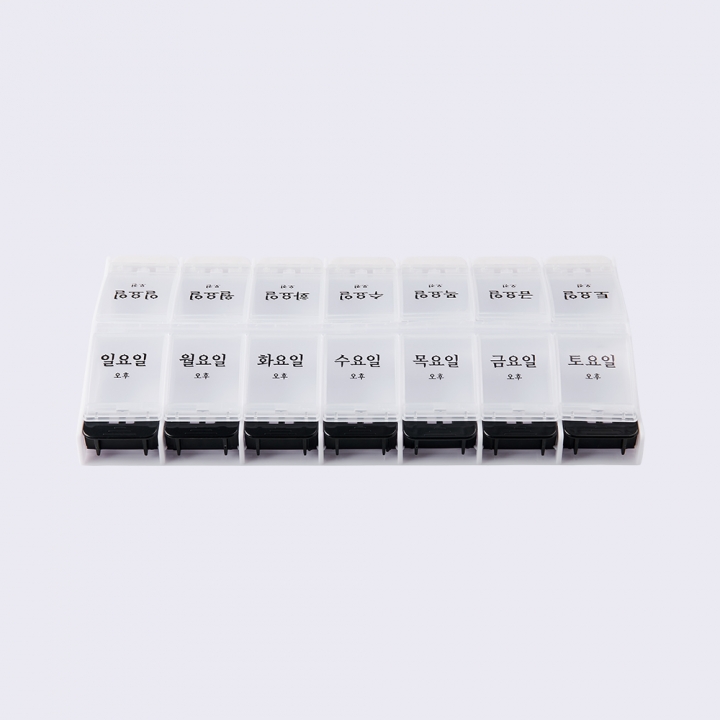

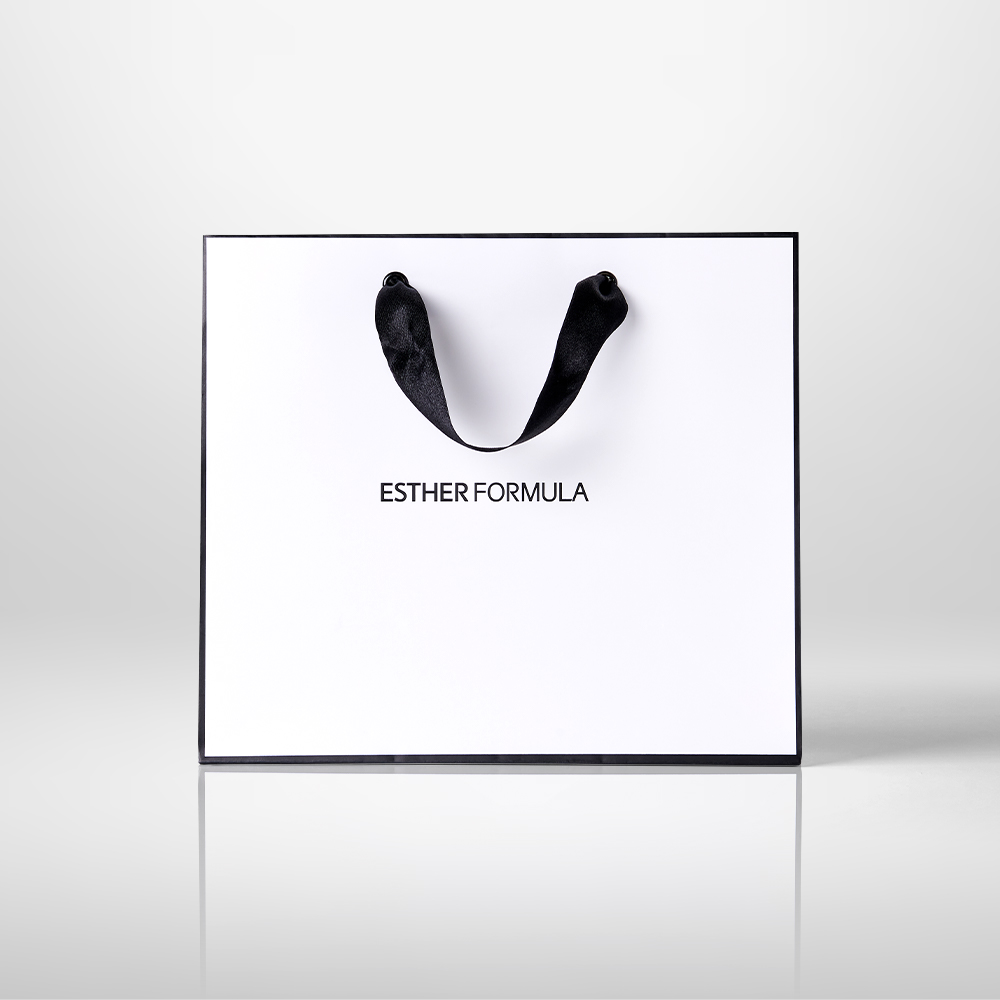


![[12월특가][2+2] 질 유래 유산균 화이트 4박스 (총 4개월분) [12월특가][2+2] 질 유래 유산균 화이트 4박스 (총 4개월분)](https://godomall.speedycdn.net/d38889e2d902ed3dcc124f1c31cbbf35/goods/1000002246/image/main/1000002246_main_040.jpg)
![[12월특가][2+2] 유산균 & 당케어 플러스 4박스 (총 4개월분) [12월특가][2+2] 유산균 & 당케어 플러스 4박스 (총 4개월분)](https://godomall.speedycdn.net/d38889e2d902ed3dcc124f1c31cbbf35/goods/1000002348/image/main/1000002348_main_027.jpg)